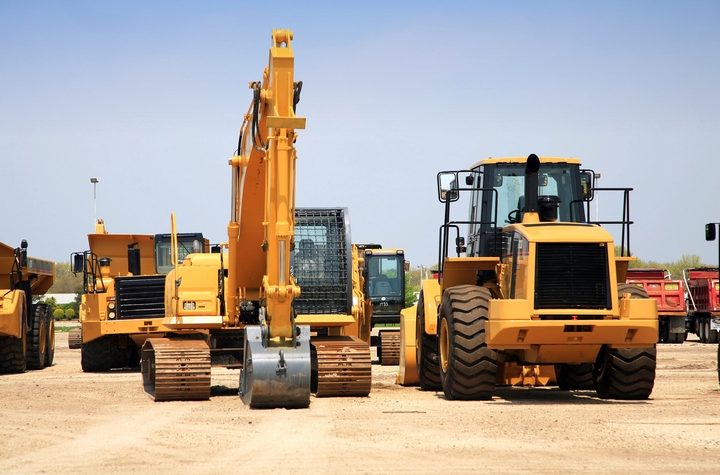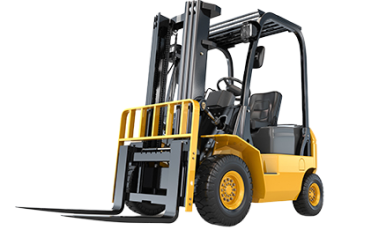Top-Rated Equipment Rental Company Near Me: Locate Forklift Rental and Aerial Lift Rental Today
Top-Rated Equipment Rental Company Near Me: Locate Forklift Rental and Aerial Lift Rental Today
Blog Article
Crucial Tips for Managing Heavy Devices Rental Contracts and Logistics Properly
Successfully taking care of hefty equipment rental agreements and logistics is critical for the success of any kind of job that counts on these resources. An extensive understanding of rental terms, combined with specific analysis of equipment requirements, lays the structure for desirable settlements. Working with transport logistics and planning for recurring upkeep can dramatically lower unexpected costs and delays. The details of these elements typically present challenges that call for strategic insight. What are the vital factors to consider that can transform these prospective mistakes right into possibilities for effectiveness and cost-saving?
Understand Rental Terms
Comprehending rental terms is vital for effective hefty equipment management. The rental duration specifies the timeframe for which the equipment is rented, influencing budgeting and project timelines.
Additionally, it is crucial to understand the maintenance responsibilities laid out in the arrangement. Normally, rental firms maintain the tools, but understanding who is accountable for routine checks and repair services is essential to avoid operational disruptions. Additionally, terms might consist of conditions worrying liability for problems or burglary, which can have severe monetary effects if not properly understood.

Assess Tools Needs
Assessing devices requirements is an important step for any type of task manager aiming to maximize source allotment and improve operational performance. This process includes a thorough analysis of the job needs, consisting of specific tasks, timelines, and the sort of equipment necessary to accomplish wanted outcomes.
Begin by recognizing the scope of the project and the jobs that will certainly be executed. Consider factors such as the terrain, the range of procedures, and any possible difficulties that might affect devices selection. Involving with staff member that will certainly run the equipment can give valuable insights into useful demands and preferences.

Next, evaluate the ability and capacities of offered devices options. It is necessary to match the appropriate devices to the jobs available, guaranteeing that it can deal with the anticipated work without jeopardizing security or performance.
Furthermore, aspect in the rental duration and regularity of usage. Understanding these aspects can aid determine whether renting out or acquiring is the most affordable solution. By conducting a thorough evaluation of equipment requirements, job managers can make educated decisions that result in enhanced performance and minimized functional expenses.
Negotiate Effectively
As soon as the equipment requirements are plainly identified, the next step includes efficient settlement with rental companies to safeguard desirable terms. Begin by investigating different rental firms to recognize their pricing structures, stock schedule, and track record.
When approaching the negotiation table, be clear about your demands, including the kind of tools, rental duration, and any added services you may need. This transparency allows rental companies to supply customized remedies that can fulfill your certain demands (forklift rental). Do not hesitate to request for discount rates, specifically for long-lasting leasings or mass orders, as numerous companies agree to use giving ins to protect larger contracts
These variables can substantially impact the general cost and needs to be clearly outlined in the rental contract. Make certain that all agreed-upon terms are documented in composing to protect against misunderstandings and safeguard your passions throughout the rental why not check here duration.
Coordinate Transportation Logistics
Working with transportation logistics is an important aspect of taking care of heavy devices rental arrangements. Effective transport makes sure that tools is delivered in a timely manner and in optimal problem, therefore reducing downtime and boosting project effectiveness. To attain this, it is important to create a detailed logistics plan that describes the whole transport process from pick-up to shipment.
Begin by analyzing the particular transportation requirements based on the type and size of the equipment included - construction equipment rentals. Engage with trusted transportation carriers that concentrate on hefty tools to ensure they possess the necessary know-how and devices, such as flatbed vehicles or specialized trailers. Review variables such as weight restrictions, course constraints, and required authorizations to stay clear of unanticipated hold-ups
Moreover, keep open interaction with both the rental business and the transportation provider to coordinate schedules effectively. Validate all details, consisting of pick-up and drop-off times, to make sure everybody is straightened and prepared. Establish backup plans to address any possible disturbances, such as unfavorable climate or website traffic problems, which may influence the transportation timeline. By thoroughly coordinating transport logistics, you can maintain the integrity of your rental arrangement and assist in smooth task execution.
Plan for Maintenance and Assistance

Furthermore, it is important to connect straight with the rental copyright pertaining to upkeep obligations. Some arrangements may include maintenance as component of the rental solution, while in other cases, the obligation might drop on the tenant. Comprehending these terms will certainly aid stay clear of unforeseen costs and obligations.
Additionally, having accessibility to technical assistance can be very useful. Make visit the website sure that the rental business supplies 24/7 support or an emergency call, allowing for swift resolution of any kind of devices issues. Training your team on correct devices use and regular checks can additionally dramatically improve operational performance.
Conclusion
In conclusion, efficient administration of hefty equipment rental agreements and logistics joints on a thorough understanding of rental terms, specific assessment of equipment demands, and experienced negotiation skills. Emphasizing clear interaction with all stakeholders continues to be vital in navigating the complexities of equipment leasing and logistics monitoring.
Effectively taking care of hefty equipment rental arrangements and logistics is important for the success of any kind of task that counts on these resources. By completely assessing and understanding these rental terms, companies can make educated choices, minimize threats, and ensure that their hefty devices management lines up with project objectives and monetary restrictions.Collaborating transportation logistics is an essential aspect of handling heavy equipment rental agreements.In conclusion, reliable monitoring of hefty devices rental contracts and logistics hinges on a detailed understanding of rental terms, specific analysis of devices needs, and proficient negotiation skills. Stressing clear interaction with all stakeholders remains vital in navigating the complexities of tools service and logistics administration.
Report this page